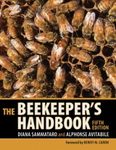Proceedings
By: Maurice W Sabelis(Editor), Jan Bruin(Editor)
566 pages, illustrations, tables
![Trends in Acarology Trends in Acarology]()
Click to have a closer look
About this book
Contents
Customer reviews
Related titles
About this book
Mites and ticks are everywhere and acarologists go after them – some explore their bewildering diversity, others try to understand their how and why. For the past 50 years, the International Congress of Acarology has been the forum for worldwide communication on the knowledge of Acari, helping researchers and students to look beyond their disciplines. Many mites and ticks are economic factors as they are pests of agricultural, veterinary and medical importance, and several species have become model organisms in modern biology.
The 96 contributions to Trends in Acarology – reflecting fields as molecular biology, biochemistry, physiology, microbiology, pathology, ecology, evolutionary biology, systematic biology, soil biology, plant protection, pest control and epidemiology – have been reviewed and carefully edited. Trends in Acarology contains a wealth of new information, that may stimulate research for many years to come.
Contents
Partial table of contents:
PLENARY OPENING LECTURE
- From sequence to phoresy - molecular biology in acarology (Hans Klompen)
PHYLOGENY AND TAXONOMY OF ACARI
- Systematic relationships of Lohmanniidae (Acari: Oribatida) (Roy A. Norton)
- Anomalies of notogastral structures in poronotic oribatid mites (Oribatida: Poronota) interpreted as cryptic ancestral characters modulated by regulatory genes (Gerd Weigmann)
- Phylogeny and host-parasite associations of feather mites of the Pteroherpus generic group (Astigmata: Pteronyssidae) (Sergey Mironov & Georges Wauthy)
- Ontogeny of the famulus in selected members of Damaeidae (Acari: Oribatida) and its suitability as a phylogenetic marker (Jan Mourek & Ladislav Miko)
- 37 Food competition and feeding behavior and its implications for the phylogeny of the Histiostomatidae (Astigmata) (Stefan Wirth)
- Assessment of the usefulness of eight DNA fragments for phylogenetic studies within the family Phytoseiidae (M.-S. Tixier, S. Guichou & S. Kreiter)
- The genus Dermanyssus (Mesostigmata: Dermanyssidae): history and species characterization (L. Roy & C. Chauve)
MORPHOLOGY OF ACARI
- First ultrastructural observations on a putative sperm access system in veigaiid females (Veigaiidae, Gamasida) (Gerd Alberti, Antonella di Palma, Gerald W. Krantz & Czeslaw Blaszak)
- Comparative ultrastructure of the integument in adult mites of the Parasitengona and its phylogenetic implication (Andrew B. Shatrov)
- The water mite family Pontarachnidae, with new data on its peculiar morphological structures (Acari: Hydachnidia) (Harry Smit & Gerd Alberti)
- Two novel adaptations for dispersal in the mite family Histiostomatidae (Astigmata) (Norman J. Fashing)
- 'Private matters' of Sancassania berlesei (Acaridida, Acaridae): testes, receptaculum seminis, ovary and the location of sperm (Kerstin Klien & Manfred G. Walzl)
BIOGEOGRAPHY AND BIODIVERSITY OF ACARI
- Heterozerconidae: A comparison between a temperate and a tropical species (Beverly S. Gerdeman & Rufino Garcia)
- Patterns of diversity inthe Ceratozetoidea (Acari: Oribatida): a North American assessment (Valerie Behan-Pelletier & Heinrich Schatz)
- Mites occurring in the canopy of Sitka spruce growing in Ireland (Julio Arroyo, Patrick Neville & Thomas Bolger)
- Changes of the oribatid community after a windthrow event (Eileen Kreibich, Coronula Grauf & Sabrina Strauch)
- Effects of a windthrow event in the forest of the peninsula Darss on the gamasid fauna (Arachnida) and Collembola (Annett Wegener & Gerd Alberti)
- Succession of oribatid fauna (Acari, Oribatida) in fallen spruce trees: Deadwood promotes species and functional diversity (Piotr Skubala & Magdalena Maslak)
- Effects of reforestation with conifers on the communities of mesostigmatic mites in northern Spain (Acari: Mesostigmata) (Maria Lourdes Moraza)
- Actinedid mite community diversity in a succession gradient in continental sand-dune habitats of central Europe (David J. Russell & Gerd Alberti)
- Communities of Oribatida associated with litter input in western red cedar tree crowns: Are moss mats 'magic carpets' for oribatid mite dispersal? (Zoe Lindo)
- Oribatid communities (Acari: Oribatida) associated with bird's nest ferns (Asplenium nidus complex) in a subtropical Japanese forest - a mini-review (Shigenori Karasawa & Naoki Hijii)
- Mites of the families Anystidae and Teneriffiidae from Baja California Sur, Mexico (Mercedes Guadalupe Lopez-Campos & Ignacio Vazquez-Rojas)
- Terrestrial species of the genus Nanorchestes (Endeostigmata: Nanorchestidae) in Europe (Matti Uusitalo)
- Ptyctima (Acari, Oribatida) in various habitats in Finland (R. Penttinen & V. Huhta)
- Distribution of Cosmochthonius species (Oribatida: Cosmochthoniidae) in the eastern part of the Mediterranean, Ukraine and Tajikistan (R. Penttinen & E. Gordeeva)
- An inventory of oribatid mites, the main decomposers in bogs of Colchic Lowland (Caucasus, Georgia) (Maka Murvanidze & Eristo Kvavadze)
- The soil mites of buttongrass moorland (Tasmania) and their response to fire as a management tool (David Green)
etc.
Customer Reviews
Proceedings
By: Maurice W Sabelis(Editor), Jan Bruin(Editor)
566 pages, illustrations, tables



































